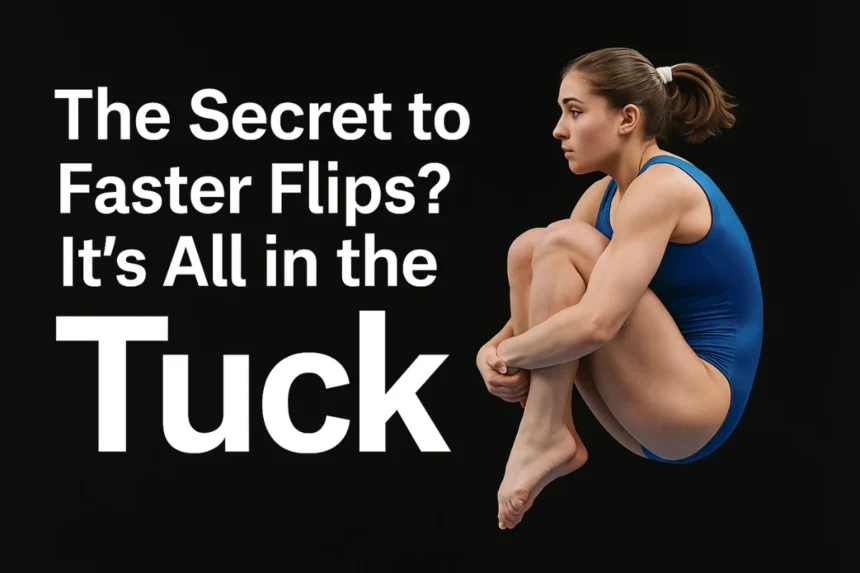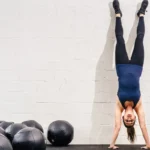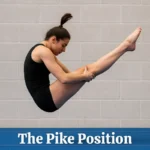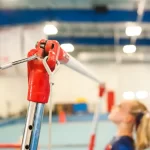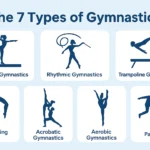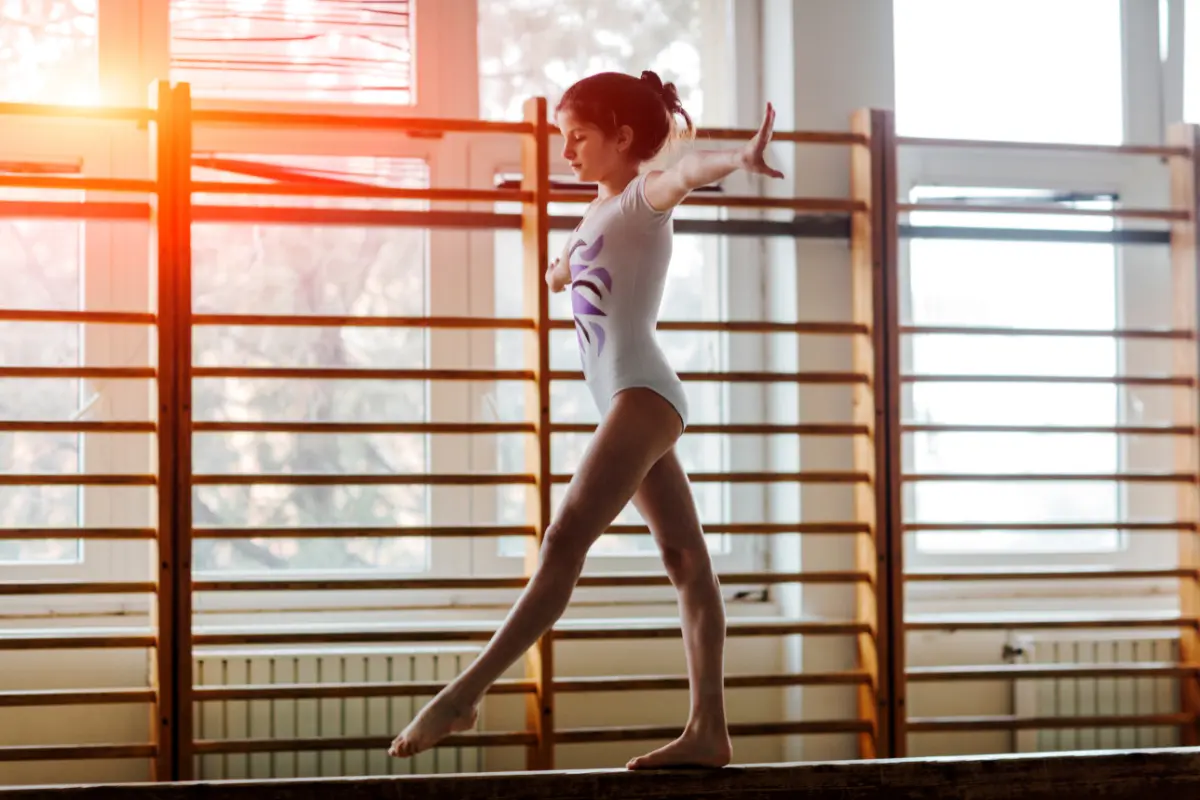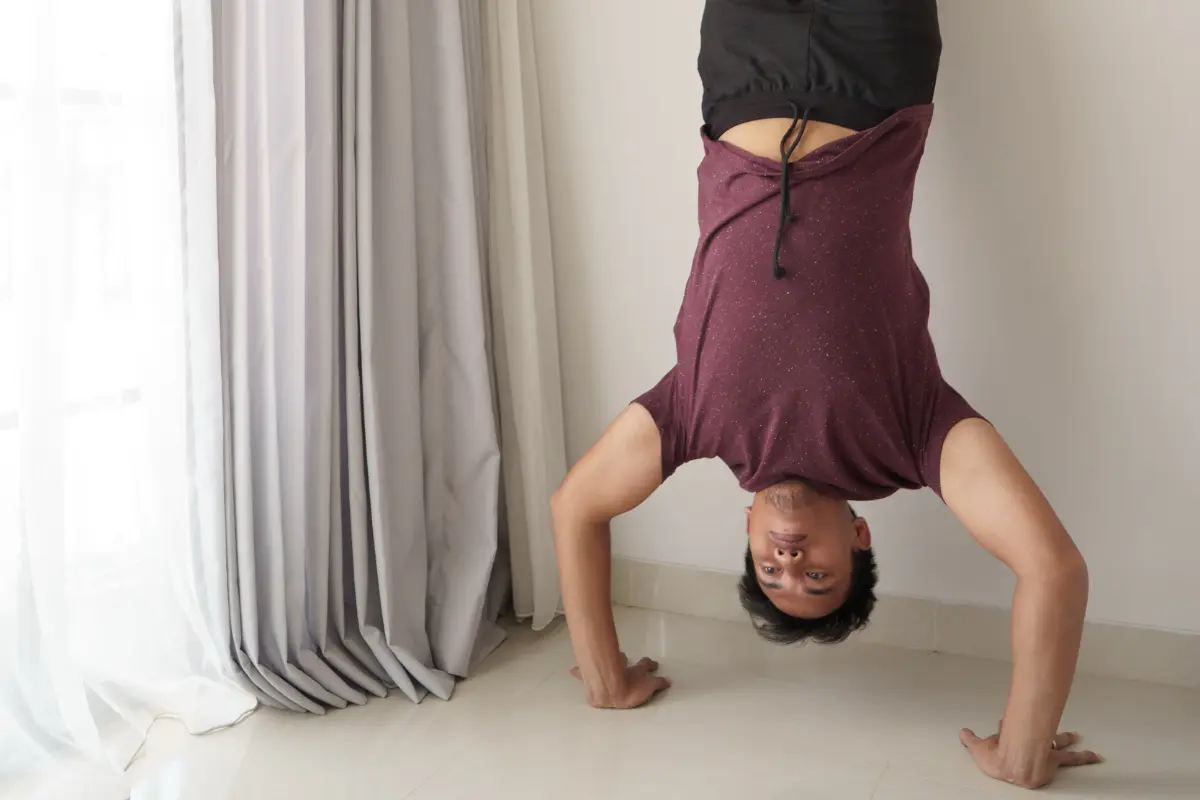If you’ve ever watched a gymnast whip through a back tuck or layout and wondered how they spin so fast in midair, the answer lies in one powerful word: tuck.
In gymnastics, the tuck position is one of three primary body shapes used during aerial skills, alongside the pike and layout. It’s defined by:
- Knees pulled tightly to the chest
- Arms wrapped around the shins or held close
- Rounded back
- Head neutral and eyes forward
- Toes pointed and legs glued together
This shape creates a compact ball, allowing the body to spin more quickly during somersaults.
The Physics Behind the Speed
So why does tucking make flips faster? It’s all about moment of inertia, a principle in physics that explains how mass affects rotational speed.
Think of your body like a spinning figure skater. When they pull their arms in, they spin faster. This same principle—conservation of angular momentum—applies to gymnasts. The tighter the tuck, the less resistance the body offers during rotation, and the faster the flip.
In short:
Tighter tuck = less resistance = faster flip.
This isn’t just theory—it’s why almost all beginner flips are taught in tuck first. It gives athletes more rotation in less time, helping them land safely and build confidence before progressing to more open shapes like the layout.
Anatomy of a Lightning-Fast Tuck
A fast tuck isn’t just about pulling your knees in and hoping for the best. It’s a carefully coordinated shape, built from head to toe, that helps you rotate faster, flip higher, and land cleaner. Here’s what makes an elite tuck so powerful:
1. Hips Lead the Way
The tuck starts at the hips, not the knees. Snapping the thighs up toward your chest right away helps your core take over the movement. That’s what makes the tuck quick and sharp—instead of slow and heavy like a hamstring pull.
2. Tight Knee Angle
Top gymnasts aim for a knee angle smaller than 45 degrees. That means the thighs and shins are nearly touching. The tighter you tuck, the less your legs drag, and the faster you spin.
3. Rounded, Not Rigid
Think of your spine like a soft “C” shape. A rounded back keeps everything compact and helps protect your lower spine during landing. A stiff, flat back slows you down and puts more stress on your body.
4. Arms In, Not Out
Whether you grab your shins, hug your knees, or wrap around your thighs, the key is to keep your arms close. Elbows in, shoulders slightly forward. If your arms splay out, your body gets wider—and slower.
5. Toes Matter, Too
Yes, even your toes! Pointing them keeps your legs aligned and polished. It also stops your heels from sticking out and catching on the floor or equipment. A clean line makes your tuck faster and better-looking.
Timing: The Hidden Ingredient
Even a flawless tuck shape won’t deliver if you throw it at the wrong moment. Timing is everything.
In every flip, there’s a short, powerful window—known as the “rise” phase—that comes right after your feet leave the floor (or trampoline bed) but before gravity pulls you back down. That’s when you want to initiate your tuck.
Get it wrong, and the consequences show:
- Tuck too late: You waste airtime and run out of space before completing your rotation.
- Tuck too early: You cut off your lift, lose height, and under-rotate the skill.
The key is learning to snap into your tuck at just the right moment—high enough to use your full jump, but early enough to start rotation while you’re still climbing.
Drills that train this exact timing are game-changers, such as Back drop snap-down to tuck on a trampoline—it teaches athletes to explode upward and immediately drive the hips in, grooving that fast, instinctive reaction you need midair.
When to Use the Tuck (And When Not To)
The tuck is best used in skills where:
- Height is limited (like beam dismounts),
- Quick rotation is needed (as in front saltos),
- Or a gymnast is still learning to flip safely.
However, in higher-level gymnastics, tucks are often replaced by pike or layout shapes for aesthetic and difficulty reasons. These shapes rotate more slowly but are rewarded more by judges when performed cleanly.
Still, the tuck remains a go-to shape for beginner-to-intermediate skills and a reliable option in routines where speed and safety matter most.
Why Tuck Matters in Gymnastics Progression
Here are just a few key skills where a solid tuck makes all the difference:
Back Tuck (Floor or Beam)
- A classic skill in floor routines and one of the most difficult saltos performed on beam. The tucked version allows for quicker rotation in limited airtime—especially crucial on a 10cm-wide beam.
Front Tuck (Punch Front)
- Used on floor or vault, the front tuck converts forward momentum into height and rotation. Without a tight tuck, the gymnast risks under-rotating or stumbling on landing.
Standing Back Tuck (Beam or Trampoline)
- A test of leg power and shape control. On beam, the margin for error is razor-thin—mastering the tuck helps the gymnast flip fast and stay centered over the beam.
Tucked Salto Dismounts (Bars or Beam)
- Many dismounts, like the double back off bars or the back tuck off beam, begin in the tuck shape. It helps gymnasts rotate quickly enough to safely complete their flips within a limited drop zone.
Tucked Yurchenko Vaults
- A common early vault in the optional levels, the tucked Yurchenko allows gymnasts to focus on form, block, and rotation before progressing to pike or layout versions.
Double Tuck (Floor or Bars Dismount)
- Whether tumbling on floor or flying off uneven bars, the double tuck is often a gymnast’s first two-flip salto. The compact shape is key to fitting both rotations into a short airtime window.
A well-executed tuck can mean the difference between crashing a new skill or landing it with confidence. As gymnasts move up in levels, they learn how to manipulate their tuck position mid-air to adjust rotation speed or height.
From Tuck to Pike and Layout: What Comes Next
Once a gymnast has mastered the tuck, the next progression is learning how to rotate with less compression and more control. That’s where the pike and layout positions come in.
These shapes demand more strength, more airtime, and a lot more precision—but they all start with the foundation built in the tuck.
Pike: The Middle Ground
The pike position keeps the legs straight and together while folding at the hips. It’s tighter than a layout but longer than a tuck, so it rotates slower. That means the gymnast has to jump higher and stay tighter to complete the flip.
Gymnasts often upgrade to a pike:
- After building confidence with tuck saltos
- When working on cleaner lines for higher execution scores
- As a stepping stone to full layouts or twisting passes
Common pike skills include:
- Pike front or back salto on floor
- Pike dismounts off bars
- Pike Yurchenko vaults
Layout: The Final Form
The layout is the longest and most challenging of the three shapes. The body stays completely extended from shoulders to toes, with no bend at the hips or knees. Because the layout creates the widest shape, it rotates the slowest—meaning timing and power have to be spot-on.
Mastering a layout means:
- You’ve developed explosive lift
- You can maintain body tension midair
- You understand how to shape your flips, not just throw them
Layouts appear in:
- Layout step-outs on beam
- Layout fulls or double layouts on floor
- Layout flyaways and vaults
Even at high levels, gymnasts often return to tucked drills to clean up form, sharpen timing, or safely try new variations. The tuck teaches the rhythm, power, and body awareness needed to manage harder skills. Without it, pike and layout shapes fall apart.
So while the tuck may look like step one—it’s really a tool that supports every step after.
